Spring is here! As we walk into the local Wounded Wetlands in the predawn darkness, Northern Cardinals are already in full song. It is too dark for photos, but two hours later on the way back home, their clear whistles dominate the soundscape.
Cardinals prefer to to sing from a prominent perch. A Pond Cypress, beginning to leaf out, provides a perfect podium:


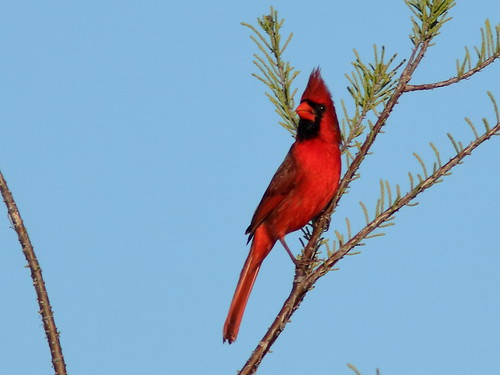
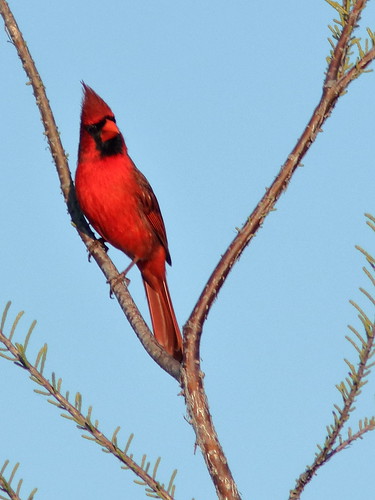
A demure female occupies a branch lower down and sings a duet with her mate:
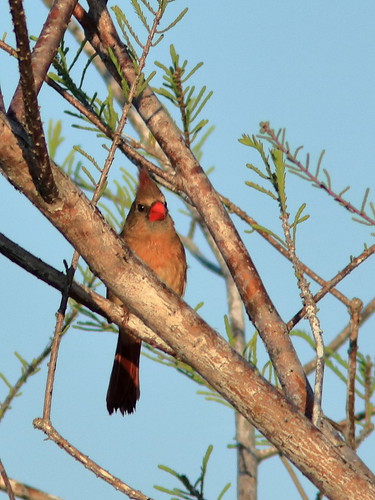
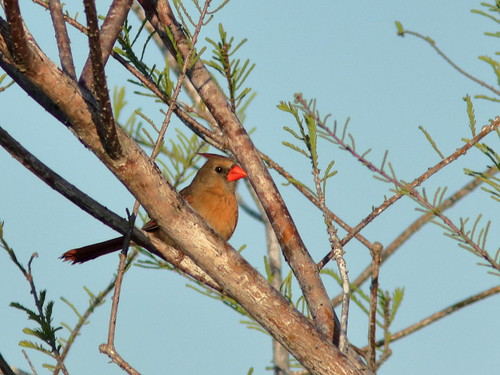
A rival male, not far away, asserts ownership of an adjacent territory:


His mate is more reclusive, hidden in the shrubs:
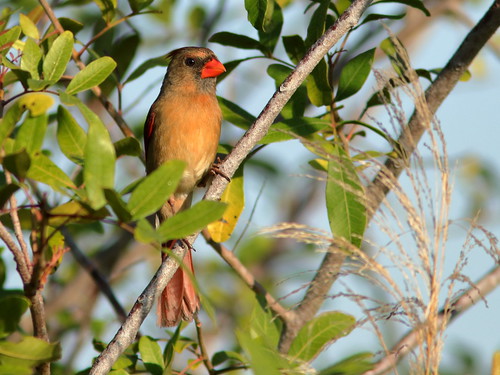
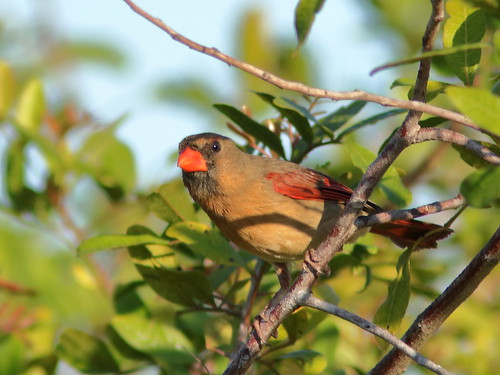
The Worm Moon, the third and final Super Moon of 2019, sets on a cloudy morning on the first day of Spring. This was the best photo I could take before it was totally obscured. If you look closely, you will see Mary Lou walking in with her flashlight at the very bottom of the photo:
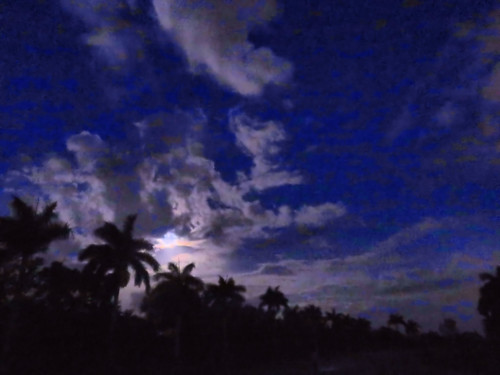
The next morning the sun rises due east in a clear sky, as seen through the fence in "Sundial Alley:"
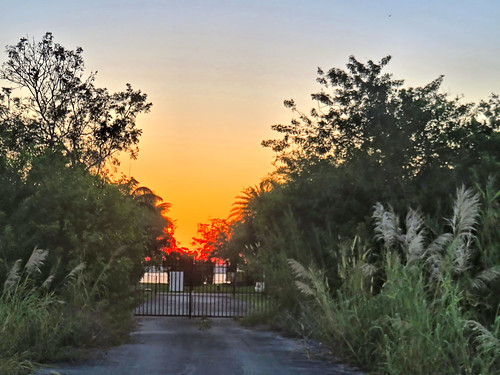 The Moon is much higher in the sky at sunrise on March 24...
The Moon is much higher in the sky at sunrise on March 24...

...and it soon disappears into the haze and clouds:

On March 26 the waning gibbous Moon...

...is followed, on the opposite horizon, by a sunrise peeking out under a blanket of clouds:
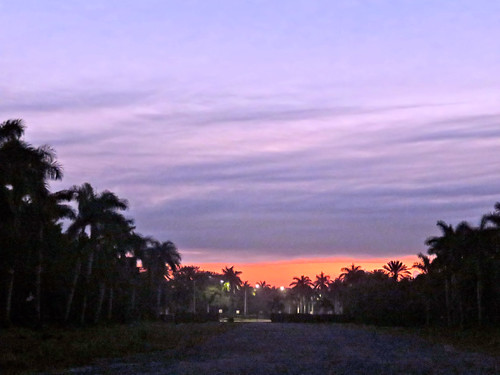
Later in the day, a Great Egret casts its reflection in morning light:

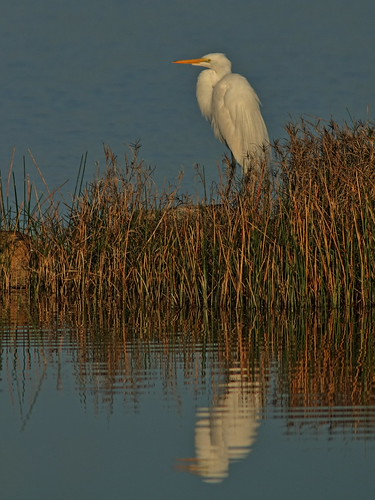
Two Mottled Ducks fly by:
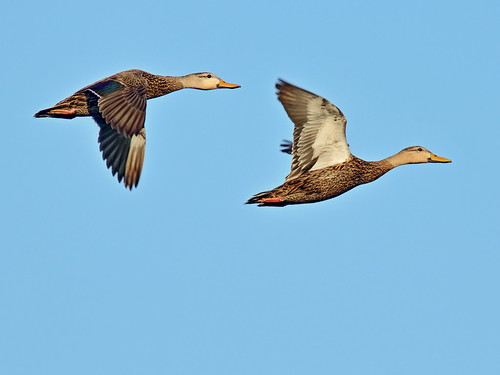
There has been a huge hatch of Halloween Pennants (Celithemis eponina). These colorful dragonflies help control the mosquitoes and midges and themselves are food for the birds, especially shrikes, kestrels and blackbirds, as well as orb-weaving spiders:
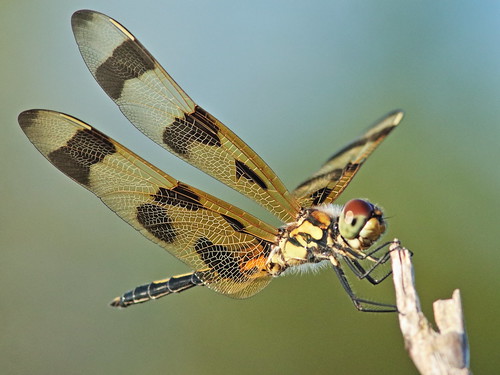
American Kestrel eats a Halloween Pennant, March 22, 2016:
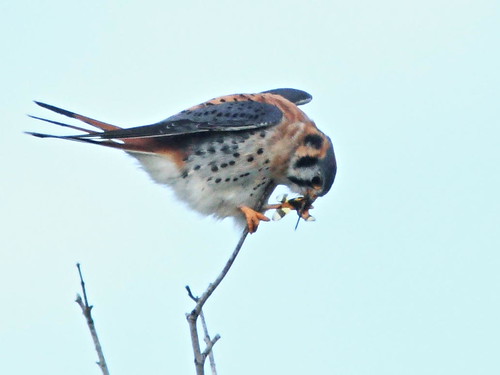
A Tropical Orb Weaver spider dispatches a Halloween Pennant, March 23, 2014:
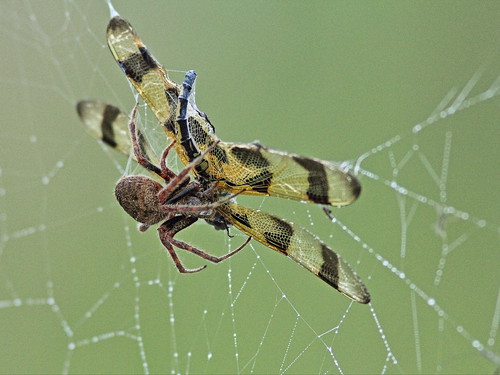
Along the path, Castor Oil Plants thrive. Their seeds are the source of ricin, a deadly poison:
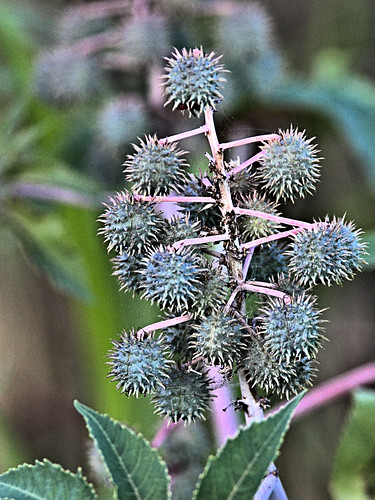 Good
news: We have been blessed by the birth of our third Great-Grandchild,
our first Great Grand-Daughter, Kennedy Lee Schneider, whose name
includes elements of those of both her parents, Kenneth and Danima Lee.
= = = = = = = = = = = = = = =
Good
news: We have been blessed by the birth of our third Great-Grandchild,
our first Great Grand-Daughter, Kennedy Lee Schneider, whose name
includes elements of those of both her parents, Kenneth and Danima Lee.
= = = = = = = = = = = = = = =
Linking to Misty's CAMERA CRITTERS,
Linking to Eileen's SATURDAY'S CRITTERS,
Linking to SKYWATCH FRIDAY by Yogi, Sylvia and Sandy
Linking to WEEKEND REFLECTIONS by James
Linking to BirdD'Pot by Anni
Linking to Our World Tuesday by Lady Fi
Linking to Wild Bird Wednesday by Stewart
Linking to Wordless Wednesday (on Tuesday) by NC Sue
Linking to ALL SEASONS by Jesh
Linking to Fences Around the World by Gosia
________________________________________________
Please visit the links to all these memes to see some excellent photos on display
________________________________________________
As a kid in New Jersey we had a junk-man a who traveled through our neighborhood on a horse-drawn wagon with cowbells dangling on a rope along its sides to alert us of his approach. I remember seeing the "Chippies," as my grandmother called them (but more properly known as "English Sparrows" in those days) feasting on their horse droppings, recycling their nutrients just as the junk-man put our discarded belongings to good use. I was a bit older when the slang term became popular in the US, but I and probably most people were unaware of its origin. It is not accurate (or polite) to say that either of these cast-off products were "strictly for the birds."
If my purpose in starting out well before sunrise and walking three miles into and around our local Wounded Wetlands were to be measured quantitatively rather than qualitatively, it might be fair to say that this winter has not provided me with much nourishment. I often identify more than 20 bird species, which is BirdChaser's RDA (Recommended Daily Allowance), but the species mix has been rather monotonous.
However, "recycling" can have its rewards. Familiar birds can reveal hidden beauty in early morning light. My camera was barely ready to capture the images before sunrise as a Great Egret flew by to roost atop a small tree:
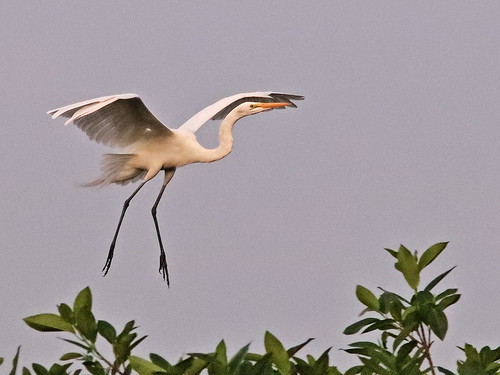
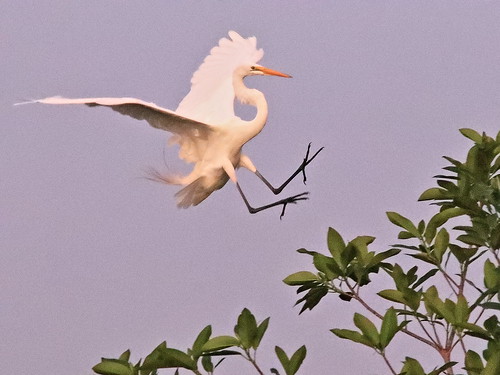
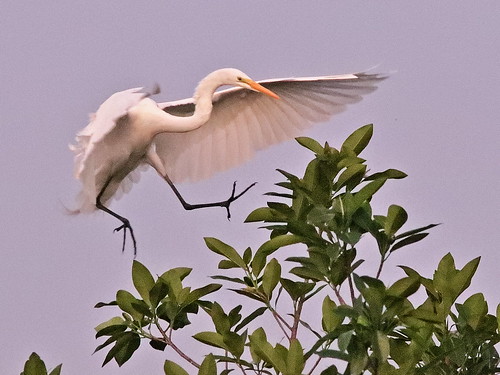


In semi-darkness, a Wood Stork stirs up prey with its bubble-gum pink feet:

First rays lend translucent beauty to an egret's wings as it comes to rest lakeside:
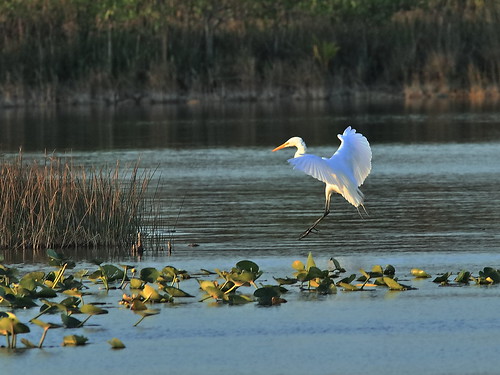

A Little Blue Heron adopts its characteristic "near-sighted" posture as it hunts with its bill nearly touching the water's surface:

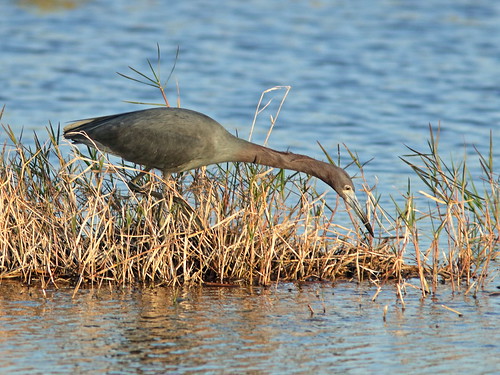
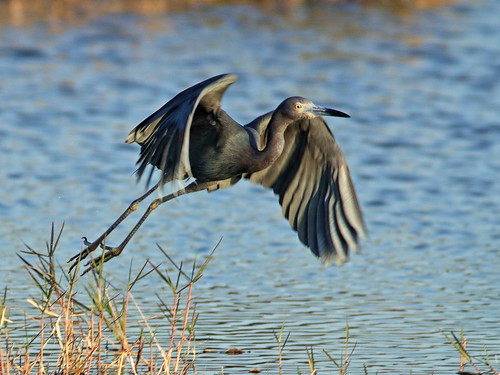
Overhead, a Bald Eagle faces the rising sun as it heads towards a favorite fishing spot:
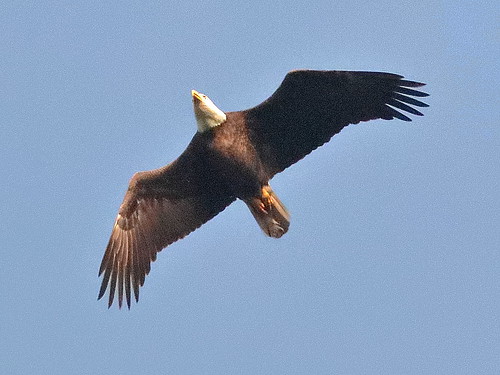
In the deep shade of the rookery, a Green Heron flies in so closely that I cannot fit all of it in the viewfinder:
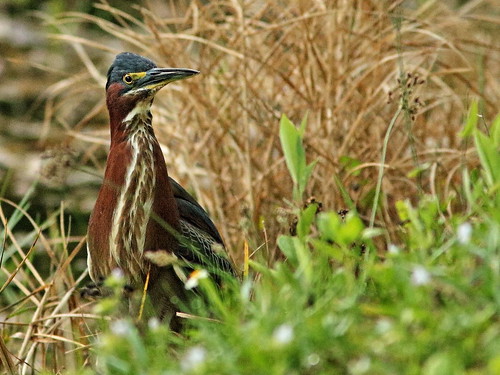
It draws in its neck to allow me to properly frame its image:
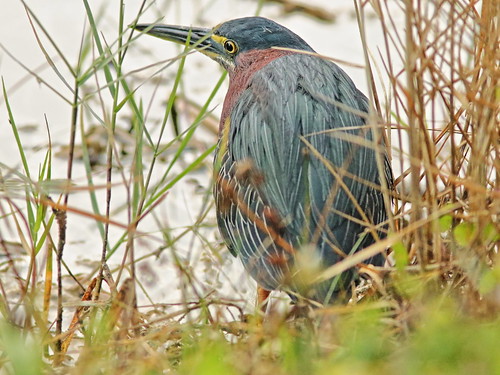

All of the above photos may rightly be criticized as being "soft" or pixillated, as they were shot at very high ISO and had to be brightened and sharpened in post-processing. Yet, in my mind, form may be more important than detail.
Looking back at this winter as spring approaches, from a birding perspective, it could be called disappointing. Numbers and variety of winter visitors have been low.
Only one American Robin revealed itself. I heard it calling and only saw it from a distance:

Palm Warblers, usually so common in dooryards all winter that they are called "Florida Sparrows," were absent many mornings:

There was a disturbing lack of the normally abundant Yellow-rumped Warblers:
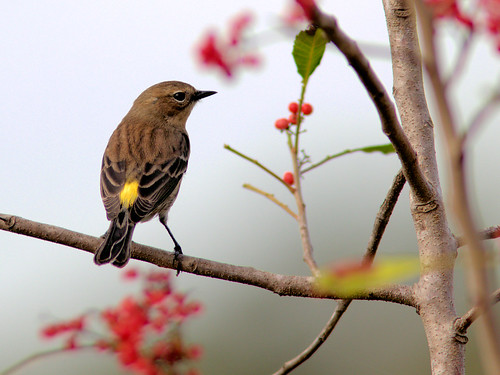
Normally, we would see several sparrow species, such as White-crowned, Swamp, Grasshopper, Lincoln's, Clay-colored and Savannah, but only a single representative of the last-named species showed up during the winter.
Savannah Sparrow (November 12, 2018):
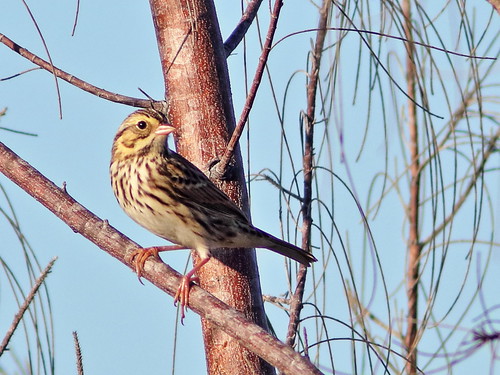
Other local birders have had the same experience, although there have been a good number of rare bird sightings. Maybe it's my age, but I have stopped chasing after them. When birding is slow there is so much more to see without burning gasoline and fighting the traffic, such as...
...fog lifting over the lake...

...and on the same morning, a scary storm moving in over the Everglades...
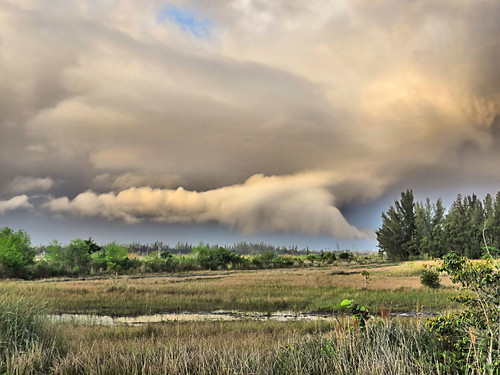
...followed by a rainbow, reflected on placid water:
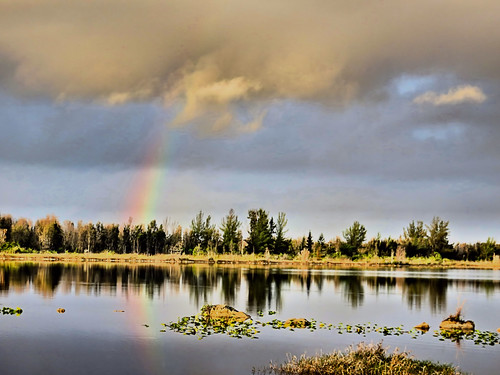
Hallloween Pennant dragonflies have hatched out in good numbers...
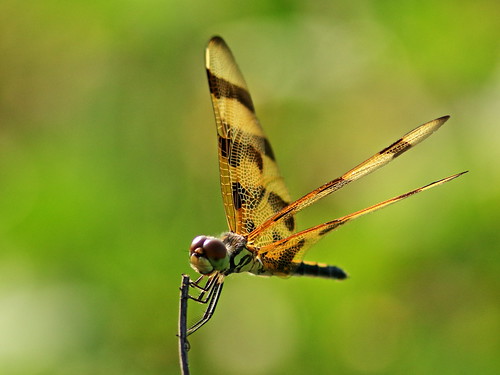 ...but butterflies have been disturbingly scarce (Gulf Fritillary):
...but butterflies have been disturbingly scarce (Gulf Fritillary):
 A seedling Lantana popped up in the middle of the gravel path:
A seedling Lantana popped up in the middle of the gravel path:
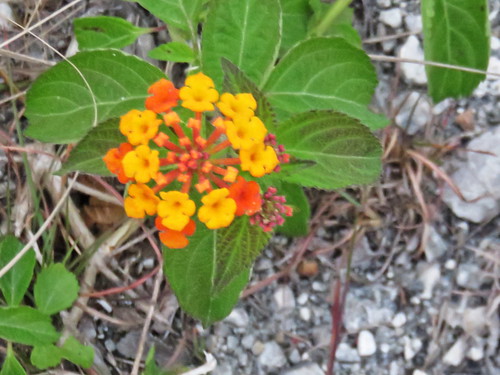
How about this! A Christmas Flower, Wild Poinsettia in March!
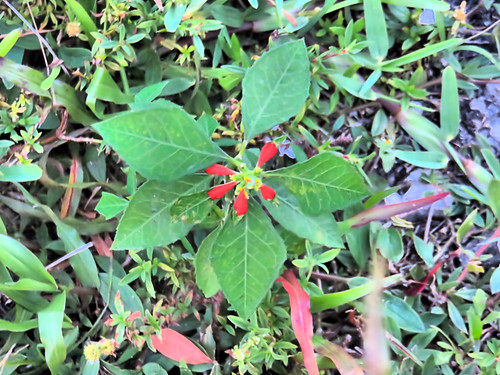
A gray Squirrel sauntered along a fence:

Walking along in my wide-brimmed hat and looking down to avoid snakes, I almost bumped my head on this swarm of honeybees:
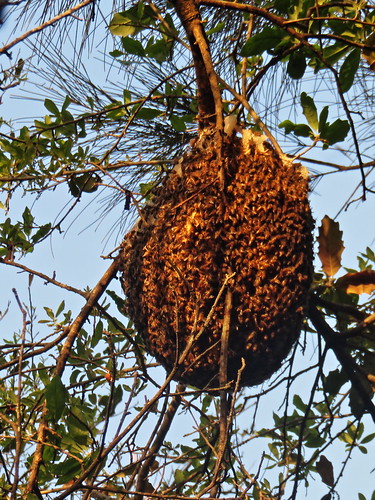 I hereby retract all the nasty things I said about this beautiful warm winter and its resemblance to horse manure. If it were not "for the birds," (and the bees and butterflies) what else would I have been doing for those past three months?
I hereby retract all the nasty things I said about this beautiful warm winter and its resemblance to horse manure. If it were not "for the birds," (and the bees and butterflies) what else would I have been doing for those past three months?
= = = = = = = = = = = = = = =
Linking to Misty's CAMERA CRITTERS,
Linking to Eileen's SATURDAY'S CRITTERS,
Linking to SKYWATCH FRIDAY by Yogi, Sylvia and Sandy
Linking to WEEKEND REFLECTIONS by James
Linking to BirdD'Pot by Anni
Linking to Our World Tuesday by Lady Fi
Linking to Wild Bird Wednesday by Stewart
Linking to Wordless Wednesday (on Tuesday) by NC Sue
Linking to ALL SEASONS by Jesh
Linking to Fences Around the World by Gosia
________________________________________________
Please visit the links to all these memes to see some excellent photos on display
________________________________________________


















































